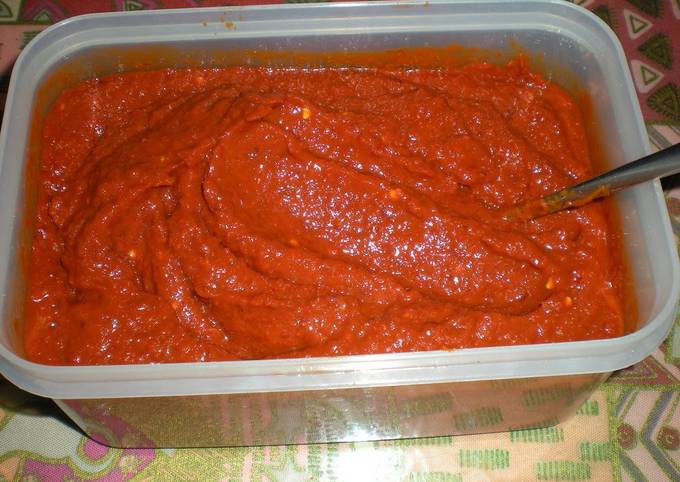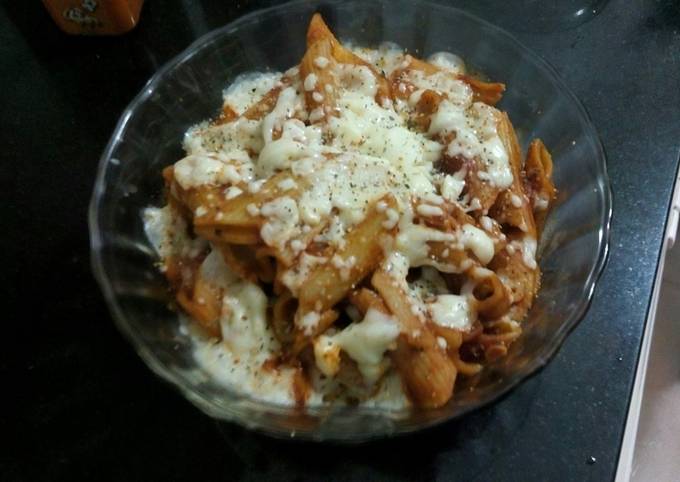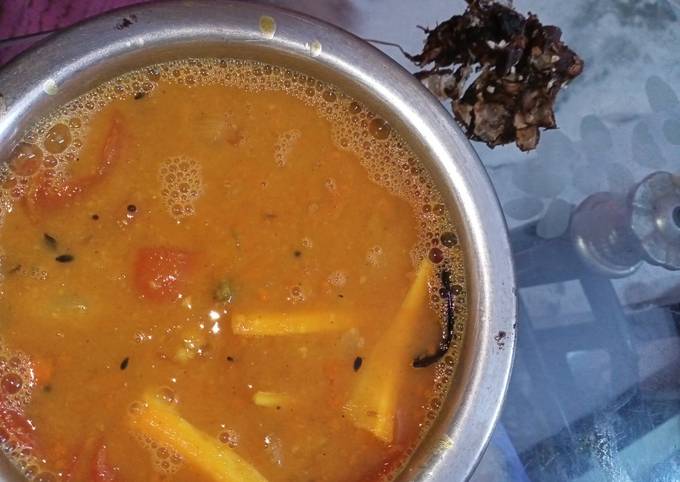
Hello everybody, it is Jim, welcome to my recipe site. Today, we’re going to make a special dish, sambal (chili pepper paste). One of my favorites food recipes. For mine, I’m gonna make it a little bit tasty. This is gonna smell and look delicious.
Sambal (Chili Pepper Paste) is one of the most popular of recent trending foods on earth. It is easy, it is fast, it tastes yummy. It’s appreciated by millions daily. They’re nice and they look wonderful. Sambal (Chili Pepper Paste) is something that I have loved my whole life.
Sambal is a chili sauce or paste, typically made from a mixture of a variety of chili peppers with secondary ingredients such as shrimp paste, garlic, ginger, shallot, scallion, palm sugar, and lime juice. Any chili sauce or paste would be called sambal. A tour of the web will find other ingredients added to Sambal Oelek, such as garlic A recipe for homemade Sambal Oelek, the classic chili paste used for cooking, made with a variety of ground chili peppers, vinegar and salt. Hey Everyone,This time, I am going to share how to make very easy and super spicy but very tasty Homemade Indonesian Spicy Chili Paste.
To get started with this recipe, we must prepare a few components. You can cook sambal (chili pepper paste) using 5 ingredients and 10 steps. Here is how you can achieve it.
The ingredients needed to make Sambal (Chili Pepper Paste):
- Make ready Red chili peppers (dried)
- Prepare Garlic
- Get Bawang merah (shallots) or regular onions
- Get Belacan (shrimp paste)
- Prepare Water
Sambal is a Southeast Asian pepper paste. Sambal is a Southeast Asian pepper paste. It's not always traditionally fermented, but we were reminded of this recipe on a recent visit from our friends Kristin and Christopher Shockey, authors of Fermented Vegetables: Creative Recipes for Fermenting. Make a baseline sambal chili paste sauce, and — if you can stand the heat — it's time to get creative in the kitchen.
Steps to make Sambal (Chili Pepper Paste):
- Finely cut up the dried red chili peppers with a pair of kitchen scissors.
- Cut them into thin pieces at an angle as shown. Your hands may burn from the oil coating the surface of the peppers, so I recommend wearing gloves; watch TV while cutting, since it takes a bit of time.
- Remove as many seeds as possible. With your hand covered in a plastic bag, rub the cut peppers together to release the seeds; they'll filter through the colander.
- I filtered this many seeds with 150 g of red chili peppers (about 2/3 cup).
- Rinse the cut peppers, then soak them in water for about 1/2 day, refreshing the water twice. When draining, there will be fine bits to discard, so drain slowly to separate them out.
- These are bawang merah onions. They can also be found as "hom daeng," the Thai word for shallots. They can be bought online, but since (I suspect) they're expensive, you can substitute with regular onions.
- This is belacan, a dried paste made from baby shrimp. If you don't have any, you should be able to substitute with the Thai condiment "kapi" or with Japanese "ami no shiokara" (fermented krill).
- Place all of the ingredients in a food processor or blender and blend into a smooth paste. It's done!
- Transfer the sambal to a Tupperware or resealable container, and store it in your refrigerator; it can keep for about 6 months if stored in the chilled compartment. You could also divide it into smaller portions and freeze them.
- You can't eat this sambal as is, it needs to be used in cooking, not as a finishing sauce so be careful. For the type of sambal that can be eaten as is, refer to. - - https://cookpad.com/us/recipes/143918-sambal-malaysian-chili-pepper-sauce
It's not always traditionally fermented, but we were reminded of this recipe on a recent visit from our friends Kristin and Christopher Shockey, authors of Fermented Vegetables: Creative Recipes for Fermenting. Make a baseline sambal chili paste sauce, and — if you can stand the heat — it's time to get creative in the kitchen. Add some black pepper, turmeric, shallots, lemongrass and tamarind from India — or the ginger, garlic and soy sauce brought by Chinese sailors — and you begin to get a real taste of. sambal chili paste add the necessary taste to your food. Find the perfect one for you right here. An entire range of. sambal chili paste are available at Alibaba.com.
So that’s going to wrap this up for this exceptional food sambal (chili pepper paste) recipe. Thanks so much for your time. I’m sure that you will make this at home. There is gonna be interesting food in home recipes coming up. Remember to bookmark this page in your browser, and share it to your family, friends and colleague. Thanks again for reading. Go on get cooking!


